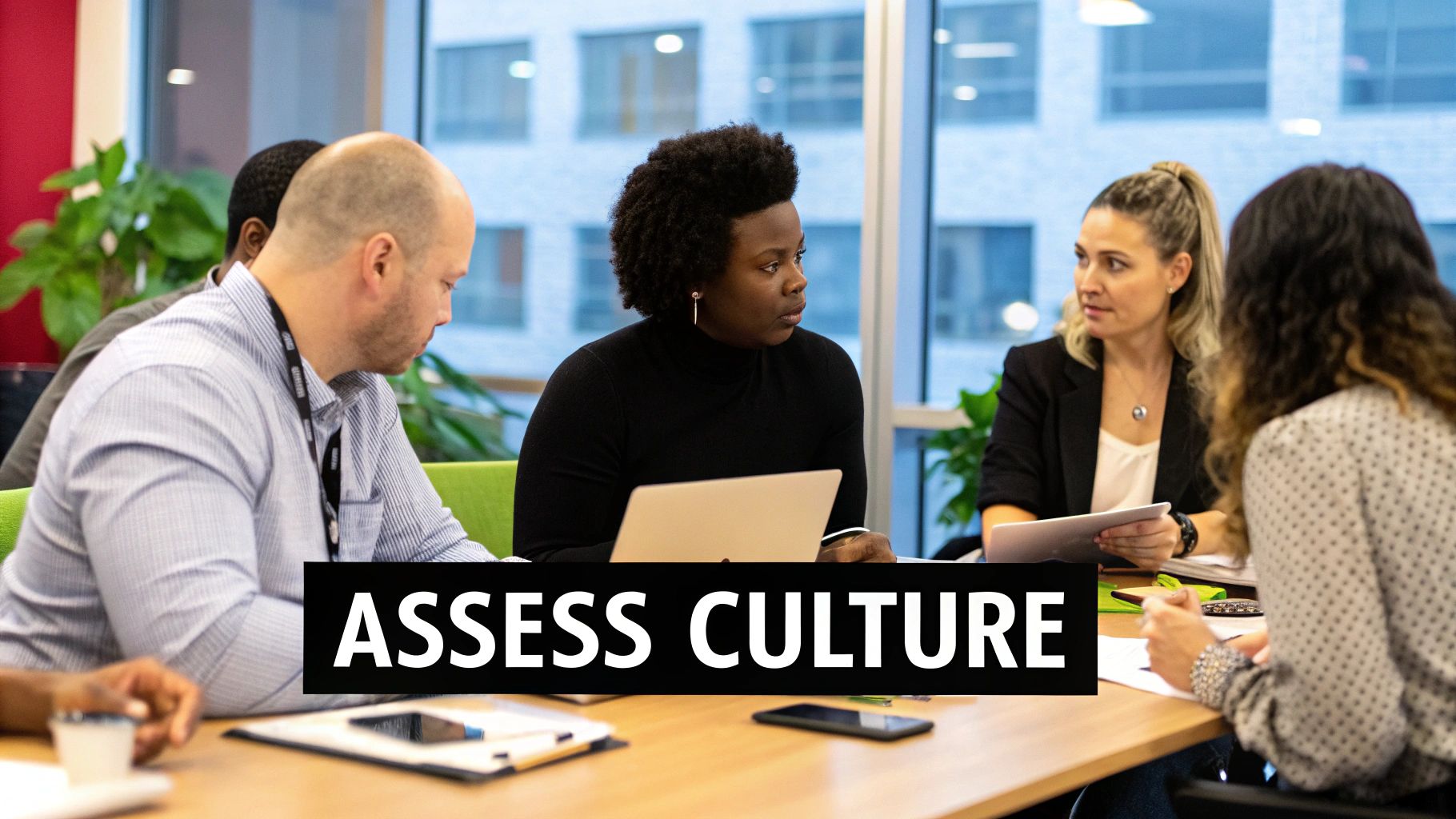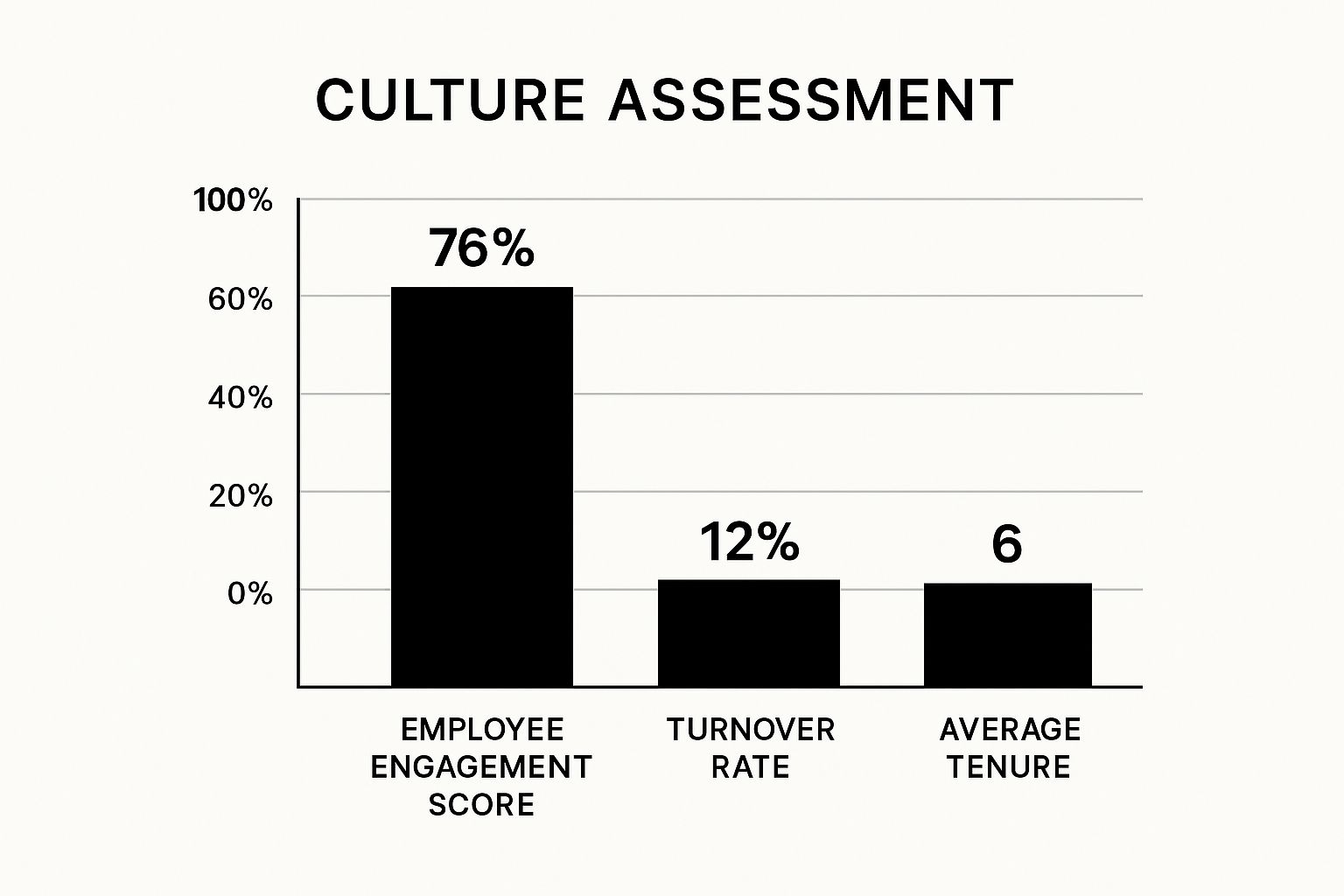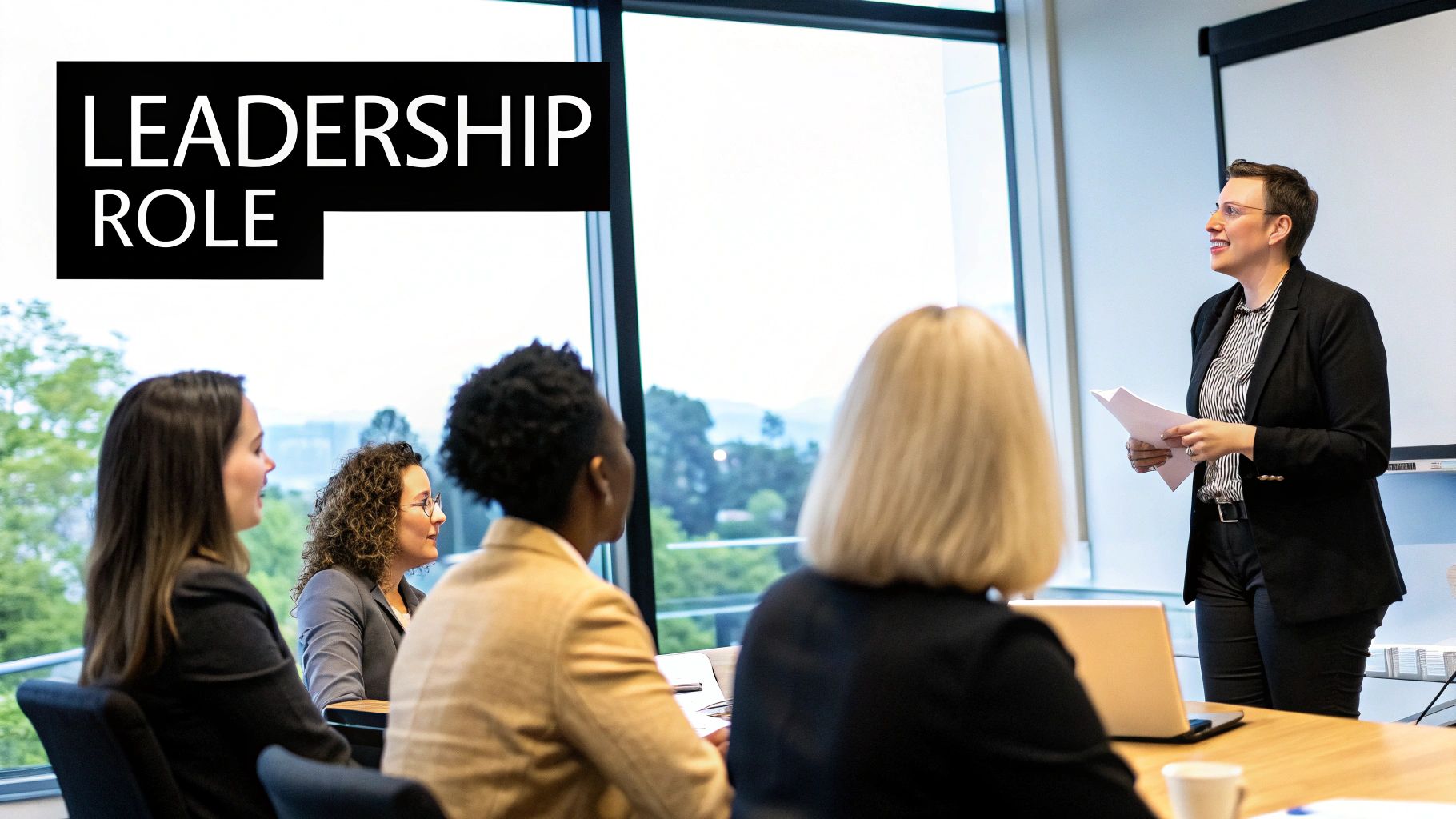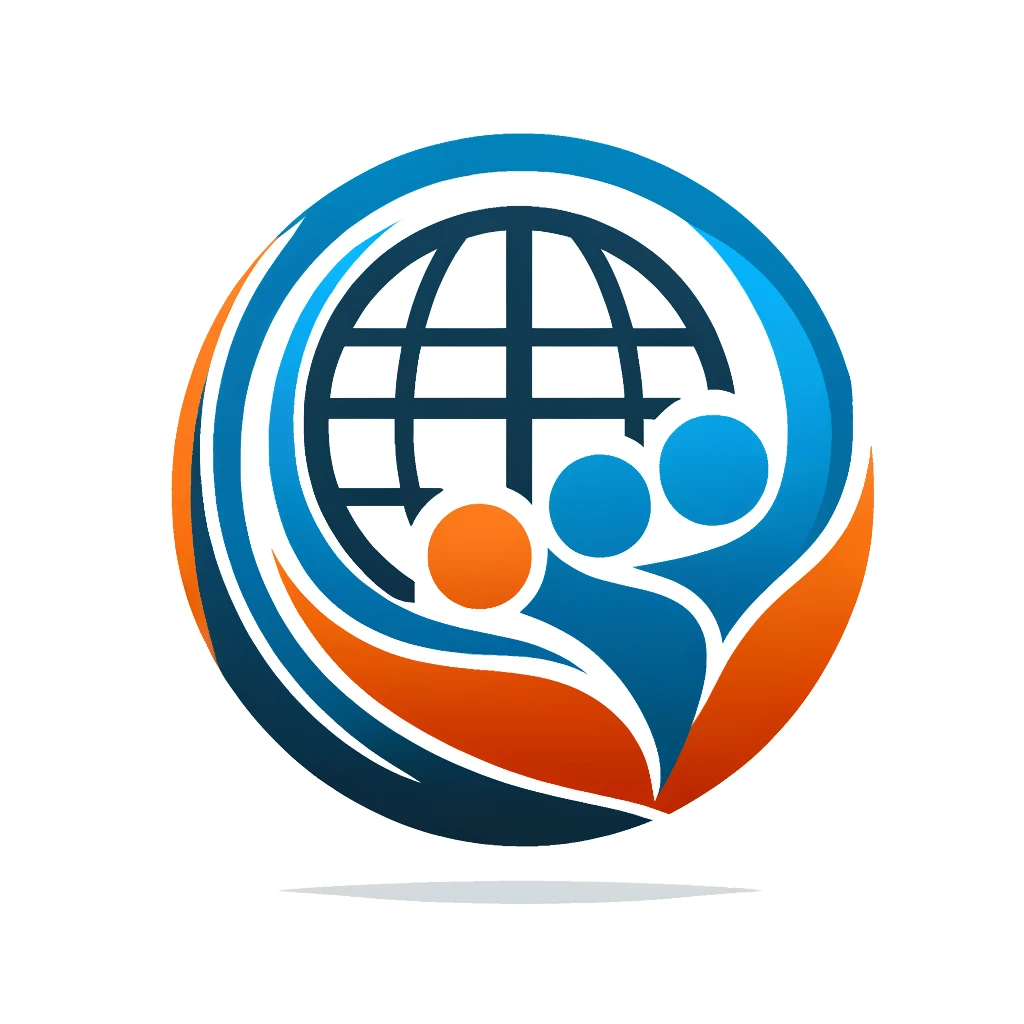Why Culture Assessment Has Become Your Secret Weapon

In today's competitive market, assessing organizational culture is essential for success. It’s the foundation for a thriving workforce, one that's engaged, productive, and dedicated to shared goals. This isn't about chasing fleeting trends; it’s about recognizing the profound impact of culture on a company's overall performance. It’s about understanding how a positive culture fuels everything from employee retention to profitability.
The Business Case for Culture Assessment
Smart organizations are using culture assessments to gain a competitive advantage. They know a strong culture directly contributes to better business outcomes. A supportive culture, for instance, can dramatically improve employee morale and motivation. This leads to increased productivity and lower turnover, reducing recruitment costs and preserving valuable knowledge within the company.
These are just a few of the many ways culture assessments benefit businesses. A focus on security culture is another key element, as highlighted in Trust-Building Activities for Creating a Strong Security Culture. A positive work environment translates to better security practices, creating a secure and trusting environment essential for long-term success.
Furthermore, PwC's Global Culture Survey 2021 revealed a strong link between organizational culture and business performance. In fact, 69% of respondents believe a strong culture is a key driver of organizational success. This data clearly emphasizes the importance of understanding and fostering a positive workplace.
Debunking the Myths of Culture Measurement
Many organizations hesitate to assess their culture due to common misconceptions. Some worry about the time investment, while others fear uncovering uncomfortable truths. However, the potential benefits far outweigh these perceived drawbacks. With the right tools and approach, culture assessments can be efficient and focused.
Addressing uncomfortable truths is the first step towards creating a healthier and more productive workplace. Effective assessments prioritize actionable insights, going beyond simply collecting data. They focus on driving positive change and improving the employee experience. By using these insights effectively, companies create a roadmap for cultural improvement, fostering continuous growth and development.
Choosing The Right Framework: What Actually Works
Stop feeling lost in a sea of theories and discover assessment frameworks that truly illuminate your organizational culture. Effective assessment means choosing the right tools. This section breaks down established approaches, comparing their real-world impact and offering guidance for selecting the best fit for your organization's unique needs.
Understanding The Options: A Framework Overview
Several frameworks exist, each with its own advantages and disadvantages. Three popular options include the Competing Values Framework, Schein's Three Levels of Culture, and the Organizational Culture Assessment Instrument (OCAI).
-
Competing Values Framework: This model organizes organizational culture into four distinct types: Clan, Adhocracy, Hierarchy, and Market. It helps organizations understand their dominant culture and pinpoint areas for growth.
-
Schein's Three Levels: This framework explores culture through Artifacts, Espoused Values, and Basic Underlying Assumptions. It provides a deeper understanding of the core beliefs and assumptions that drive behavior within the organization.
-
OCAI: This tool uses six key dimensions to assess culture, providing a quantifiable measure of cultural strength and highlighting areas for development. It offers a more data-driven perspective on cultural assessment.
Comparing Frameworks: Practical Considerations
Each framework provides a different perspective for evaluating organizational culture. The Competing Values Framework provides a broad overview, while Schein's model digs deeper into the fundamental assumptions that shape the organization. The OCAI offers a more quantitative approach. To truly grasp the importance of cultural assessment, consider how essential a positive learning culture is to organizational growth. A great resource on this is Cultivating a Culture of Learning. The ideal framework depends on your specific needs and goals.
To illustrate the impact of culture on key metrics, let's take a look at the following infographic:

As the infographic shows, a high employee engagement score (85%) correlates with a low turnover rate (10%) and a longer average tenure (6 years). This underscores the impact of a positive and engaging organizational culture.
To further clarify the differences between these frameworks, we've compiled the following comparison table:
Comparison of Leading Organizational Culture Assessment Frameworks
This table compares the most widely-used organizational culture assessment frameworks across multiple dimensions including complexity, resource requirements, and best applications.
| Framework | Key Focus Areas | Implementation Complexity | Time Required | Best For | Limitations |
|---|---|---|---|---|---|
| Competing Values Framework | Cultural types (Clan, Adhocracy, Hierarchy, Market) | Low | Relatively short | Organizations seeking a broad understanding of their culture | May oversimplify complex cultural dynamics |
| Schein's Three Levels of Culture | Underlying assumptions, espoused values, artifacts | Medium | Moderate | Organizations wanting to explore the deeper drivers of their culture | Can be time-consuming and require significant internal reflection |
| OCAI | Six key cultural dimensions | Medium | Moderate | Organizations seeking a data-driven approach to culture assessment | May require external facilitation and specialized expertise |
This table summarizes the key features and applications of each framework, allowing you to quickly compare their strengths and weaknesses. Consider your organization's specific needs and resources when selecting a framework.
Selecting The Best Fit: Matching Framework To Objectives
Choosing the appropriate framework is paramount for gaining valuable insights. Consider your organization's size, industry, and specific objectives. For instance, a startup might benefit from the Competing Values Framework to establish its initial cultural direction. A larger, more established organization might utilize Schein's model to uncover deeper cultural dynamics. Organizations seeking a data-driven approach may find the OCAI more suitable. The framework should also align with available resources and expertise.
Implementing Your Chosen Framework: Practical Steps
After selecting a framework, the next stage is implementation. This encompasses planning, data collection, analysis, and action planning. Involve stakeholders at every level to foster engagement and support. Communication is essential throughout the process. Regularly share updates and progress with employees to build momentum and demonstrate the assessment's value. By thoughtfully selecting and implementing the right framework, organizations can gain powerful insights into their culture and develop strategies for positive change. This, in turn, creates a more engaged, productive, and successful workforce.
Gathering Cultural Insights That People Actually Share

Truly understanding the heart of your organization means going beyond the surface. Assessing organizational culture is more than just distributing surveys; it's about diving deep into the shared experiences and unspoken beliefs that shape your workplace. It's about uncovering the authentic story of your culture, the one that breathes life into your team's everyday interactions.
Designing Surveys for Honest Responses
Surveys can be invaluable tools for understanding your organizational culture, but only if they're crafted with intention. Generic questions often lead to generic answers. Instead, focus on creating questions that encourage genuine reflection and open-ended responses.
For example, instead of asking, "Do you feel valued?", consider a more specific question like, "Can you share a recent example of how your contributions were recognized?". This invites employees to share real stories and provides actionable insights.
Anonymity is also crucial. By ensuring confidentiality, you create a safe space where employees feel empowered to share their honest perspectives without fear of repercussions. This fosters trust and leads to a more accurate reflection of your organization's true culture.
The Power of Interviews and Observation
While surveys offer valuable quantitative data, the rich tapestry of qualitative insights comes from interviews and observation. One-on-one interviews provide a platform for deeper exploration of individual experiences.
These conversations can uncover hidden challenges and reveal the unwritten rules that govern the workplace. Consistent themes emerging from interviews can shed light on systemic cultural strengths and weaknesses. Beyond interviews, observing team dynamics and workplace interactions offers another layer of understanding.
How are decisions made? How are conflicts resolved? Observing these everyday moments can reveal the cultural norms in action, providing a more complete picture of your organization's culture.
Creating Psychological Safety and Ensuring Representation
The 2023 SHRM Global Culture Report, encompassing feedback from 11,080 employees worldwide, revealed that 61% rate their workplace culture as 'good' or 'excellent.' Find more detailed statistics here. This positive data is encouraging, but it also highlights the potential for growth in every organization.
Creating a culture of psychological safety is paramount for gathering truly authentic insights. Employees need to feel comfortable sharing their honest feedback without fear of judgment. This requires clear communication, guaranteed confidentiality, and a commitment to respecting diverse perspectives.
Furthermore, ensuring representation from all levels and departments is essential. Actively seeking input from a wide range of voices, including those who may feel marginalized, creates a more comprehensive and nuanced understanding of the cultural landscape. This inclusive approach leads to more robust and actionable insights, paving the way for meaningful and positive change.
Transforming Raw Data Into Cultural Insights That Matter
You've collected valuable data through surveys, interviews, and observations. Now, the exciting journey of transforming that raw data into powerful insights begins. This is where the true potential for positive change lies. This section guides you on how to navigate this process and unlock meaningful patterns that will shape a thriving organizational culture.
Identifying Meaningful Patterns and Subcultures
One of the initial steps is identifying recurring themes and patterns within your data. This might involve grouping similar survey responses or recognizing shared sentiments expressed during interviews. These recurring themes illuminate the core values and beliefs within your organization.
Look for variations in these patterns across different teams or departments. These variations often reveal subcultures, unique cultural pockets within the larger organizational structure. Understanding these subcultures is critical. They can be wellsprings of innovation or potential sources of conflict. For example, a sales team might prioritize individual achievements and competition, while a research and development team might emphasize collaboration and shared learning.
Bridging the Gap Between Values and Behaviors
Assessing organizational culture involves more than just understanding what your organization says it values. It requires carefully examining how those values translate into everyday behaviors. Is there a gap between stated values and actual actions? This misalignment can be a major source of employee disengagement and frustration.
An organization might highlight teamwork in its mission statement, yet reward individual accomplishments in performance reviews. This contradiction creates confusion and weakens the desired culture. Recognizing these inconsistencies is essential for designing effective interventions.
Segmenting and Visualizing Cultural Data
To gain deeper insights, consider segmenting your data by department, tenure, or other relevant demographics. This allows you to uncover hidden patterns within specific groups. Perhaps newer employees experience the culture differently than long-tenured staff, or certain teams feel less valued. Gallup's research on organizational culture in the United States demonstrates the impact a strong culture can have on employee engagement, productivity, and profitability. Discover more about the impact of organizational culture: Impact of Organizational Culture
Visualizing your data can also make it more accessible and easier to communicate. Charts, graphs, and even word clouds can transform complex data into a digestible format. This is especially valuable when sharing your findings with stakeholders who have varying levels of familiarity with organizational culture concepts.
Prioritizing Cultural Initiatives
Finally, focus on prioritizing your cultural initiatives based on their potential impact and feasibility. Which cultural elements need immediate attention, and which can be addressed over time? Develop a clear roadmap that outlines specific actions, timelines, and the individuals responsible for each initiative. Regularly revisit and adjust this roadmap based on ongoing feedback and assessment. By transforming raw data into actionable insights and prioritizing key initiatives, organizations can cultivate a culture that fuels both employee satisfaction and business success.
Building a Culture Assessment Program That Actually Lasts

We've discussed the importance of assessing your organizational culture, finding the right framework, gathering valuable data, and turning that data into action. Now, let's focus on building a culture assessment program that's not a one-off project, but an ongoing process integrated into your organization. This is about creating real, lasting change.
Establishing a Meaningful Assessment Cadence
Keeping the momentum going is one of the biggest challenges in culture assessment. These initiatives can often become sporadic events instead of consistent practices. To prevent this, set a clear and regular assessment schedule. This could be annual, bi-annual, or even quarterly, depending on the specifics of your organization. Factors like your company’s size, industry, and the speed of change in your environment all play a role.
For example, a fast-growing startup might conduct assessments more frequently, while a larger, more established organization might choose a slower pace. The key is to find a rhythm that lets you track your progress, identify new trends, and adjust your strategies accordingly.
Integrating Culture Metrics Into Operational Dashboards
Culture shouldn't be an afterthought. Incorporate key culture metrics into your existing operational dashboards. This makes culture a visible and measurable part of your overall business strategy. Just as you track financials and customer satisfaction, you should also monitor employee engagement, feedback, and other relevant cultural indicators.
Keeping cultural data constantly visible reminds leaders of its importance and reinforces it throughout the organization. Easy access to this data empowers leaders to make smart decisions that promote a positive and productive workplace.
Building Internal Capabilities and Reducing Reliance on Consultants
External consultants can be helpful, but building internal expertise is key for long-term success. Develop in-house capabilities for assessing culture, analyzing data, and putting change into action. This might mean training HR staff, forming dedicated culture teams, or empowering internal leaders to take charge.
This internal ownership creates a deeper understanding of your specific culture and builds a sense of responsibility for ongoing improvement. It ensures that culture assessment becomes a core strength within your organization.
Maintaining Momentum Through Challenges
Staying on track can be tough, even with the best intentions. Changes in leadership, competing priorities, and resistance to change can all disrupt culture assessment programs. To overcome these hurdles, clearly connect culture to business performance.
Show how a positive culture directly contributes to key results like profits, customer satisfaction, and employee retention. This positions culture as a strategic necessity, not just a perk. This strong connection ensures your program receives the resources and support it needs to flourish.
To help you implement a thriving culture assessment program, the following table provides a structured timeline and actionable steps.
Culture Assessment Implementation Timeline: This table provides a structured timeline for implementing a comprehensive organizational culture assessment program, from initial planning through execution and follow-up actions.
| Phase | Key Activities | Timeframe | Responsible Parties | Success Metrics |
|---|---|---|---|---|
| Planning & Design | Define objectives, choose framework, design assessment tools | 1-2 months | HR Team, Culture Team | Clearly defined objectives, suitable framework selection |
| Data Collection | Conduct surveys, interviews, focus groups | 2-4 weeks | HR Team, Culture Team, Department Leaders | High participation rates, insightful qualitative data |
| Analysis & Interpretation | Identify patterns, analyze subcultures, connect values and behaviors | 4-6 weeks | HR Team, Culture Team, Data Analysts | Valuable insights from data, clear identification of cultural strengths and weaknesses |
| Action Planning & Implementation | Develop and implement action plans, share findings with stakeholders | Ongoing | HR Team, Culture Team, Department Leaders, Executive Sponsors | Measurable progress in key cultural metrics |
| Evaluation & Refinement | Track progress, gather feedback, adjust strategies | Ongoing | HR Team, Culture Team | Continuous improvement in the program, visible impact on business outcomes |
This table offers a roadmap for building a sustainable program. It outlines the essential phases, activities, and who's responsible for creating lasting cultural change. By using these guidelines and adapting them to your situation, you can build a culture assessment program that strengthens your organization from within.
Turning Cultural Insights Into Transformative Action
Data gathered from culture assessments is only valuable if it leads to positive change. This section offers practical guidance on turning insights into action, creating a roadmap for cultural transformation that resonates with everyone in your organization. This is where theory becomes reality—transforming knowledge into tangible progress.
Prioritizing Initiatives: Impact and Feasibility
Successful organizations understand they can't fix everything at once. They prioritize culture initiatives based on two key factors: impact and feasibility. High-impact initiatives tackle critical cultural weaknesses that significantly hinder business performance. High-feasibility initiatives are easier to implement, generating quick wins and building momentum for more challenging changes. Imagine nurturing a garden—you remove the weeds harming your roses first, then focus on enriching the soil for long-term health.
For instance, if low employee morale is a concern, a new recognition program might be a high-impact, high-feasibility initiative. Addressing a complex issue like a lack of innovation requires a phased approach, starting with smaller, manageable projects.
Crafting a Compelling Narrative For Change
Overcoming resistance to change requires a powerful narrative that resonates with everyone. This narrative must clearly explain why change is necessary, how it benefits the organization and its people, and what the future holds. It's similar to launching a new product—you need to convince people of its value and generate excitement about its potential.
Effectively communicating the "why" behind cultural change builds buy-in and reduces anxiety. Clearly outlining the benefits—for both the organization and individual employees—motivates people to embrace change. Painting a picture of a positive future inspires hope and shared purpose.
Feedback Loops and Demonstrating Progress
Continuous feedback is essential for measuring the effectiveness of initiatives and making adjustments. Regular pulse surveys, focus groups, and open forums provide employees with opportunities to share their experiences and provide valuable input. This dialogue ensures the transformation aligns with everyone's needs.
Transparency is key. Share progress updates with the entire organization, highlighting successes and acknowledging any roadblocks. This builds trust and maintains momentum throughout the transformation journey.
Addressing the Negative and Amplifying the Positive
Organizational culture assessments often reveal both positive and negative aspects. While it's important to address toxic elements, it's equally important to amplify existing strengths. Imagine pruning a tree—you remove dead branches to allow healthy ones to thrive.
Toxic elements, such as bullying or harassment, must be addressed quickly and decisively. This creates a safer, more inclusive environment and sends a clear message about unacceptable behaviors. Simultaneously, highlight and celebrate positive aspects of your culture to reinforce desired behaviors and build a strong foundation for future growth.
Engaging Employees at All Levels
Cultural transformation isn’t a top-down initiative—it requires the active participation of employees at all levels. Create opportunities for employees to contribute, whether it's through focus groups, culture committees, or simply sharing their ideas.
When employees feel heard and valued, they become active participants in the transformation journey. This shared ownership creates more sustainable and impactful change.
Establishing Meaningful Metrics
Finally, track progress by establishing metrics that measure genuine evolution, not superficial compliance. These metrics should align with your strategic goals and reflect the specific changes you're trying to achieve. For example, if your goal is to improve employee engagement, track metrics such as employee satisfaction scores, participation in company events, and voluntary turnover rates.
By monitoring these metrics, you can demonstrate the tangible benefits of your cultural transformation efforts and ensure your organization is moving in the right direction.
Are you ready to elevate your HR practices and foster a thriving organizational culture? Visit the Global Human Resource Institute to explore a wide range of courses and resources designed to empower HR professionals. From foundational certifications to advanced training, we offer the tools and knowledge you need to build a truly exceptional workplace.




0 Comments